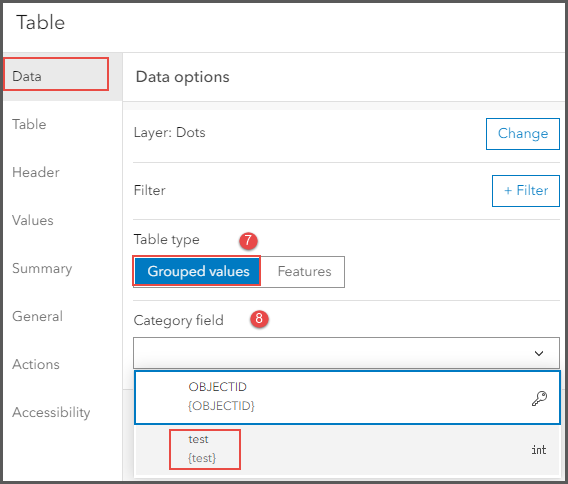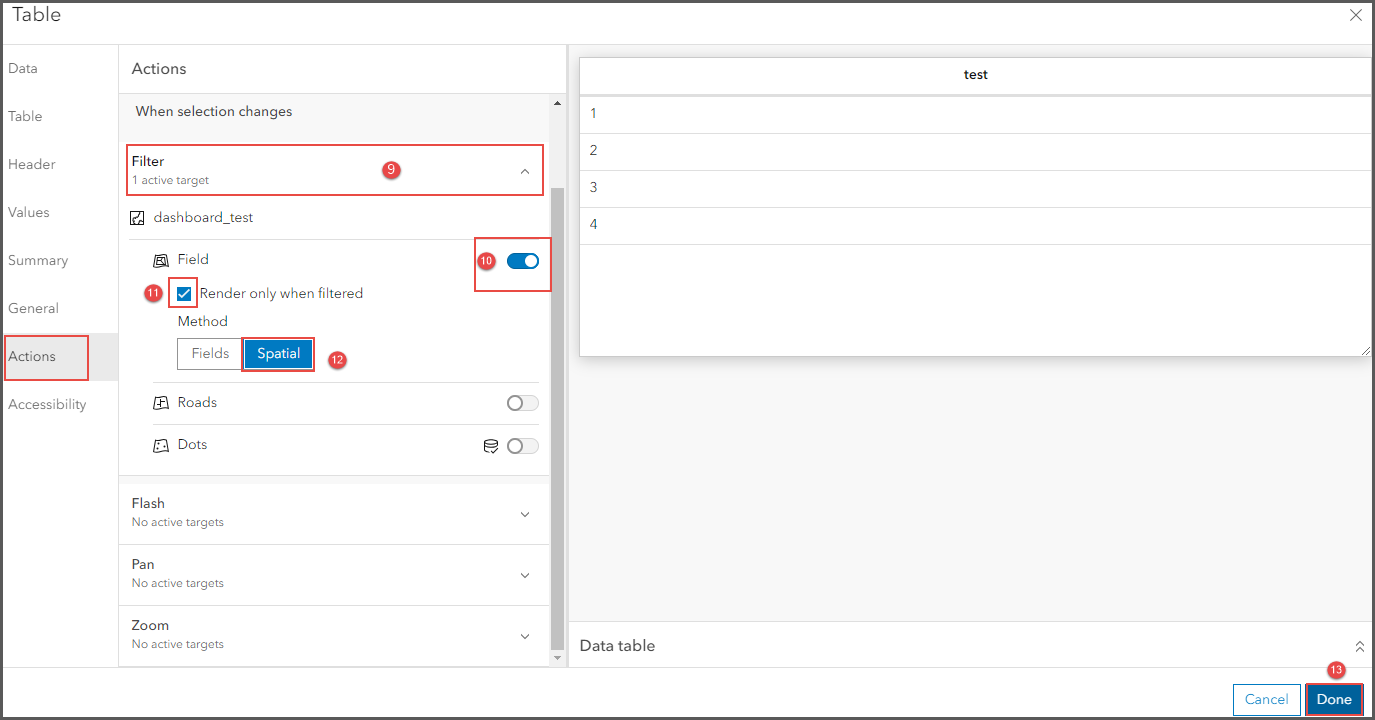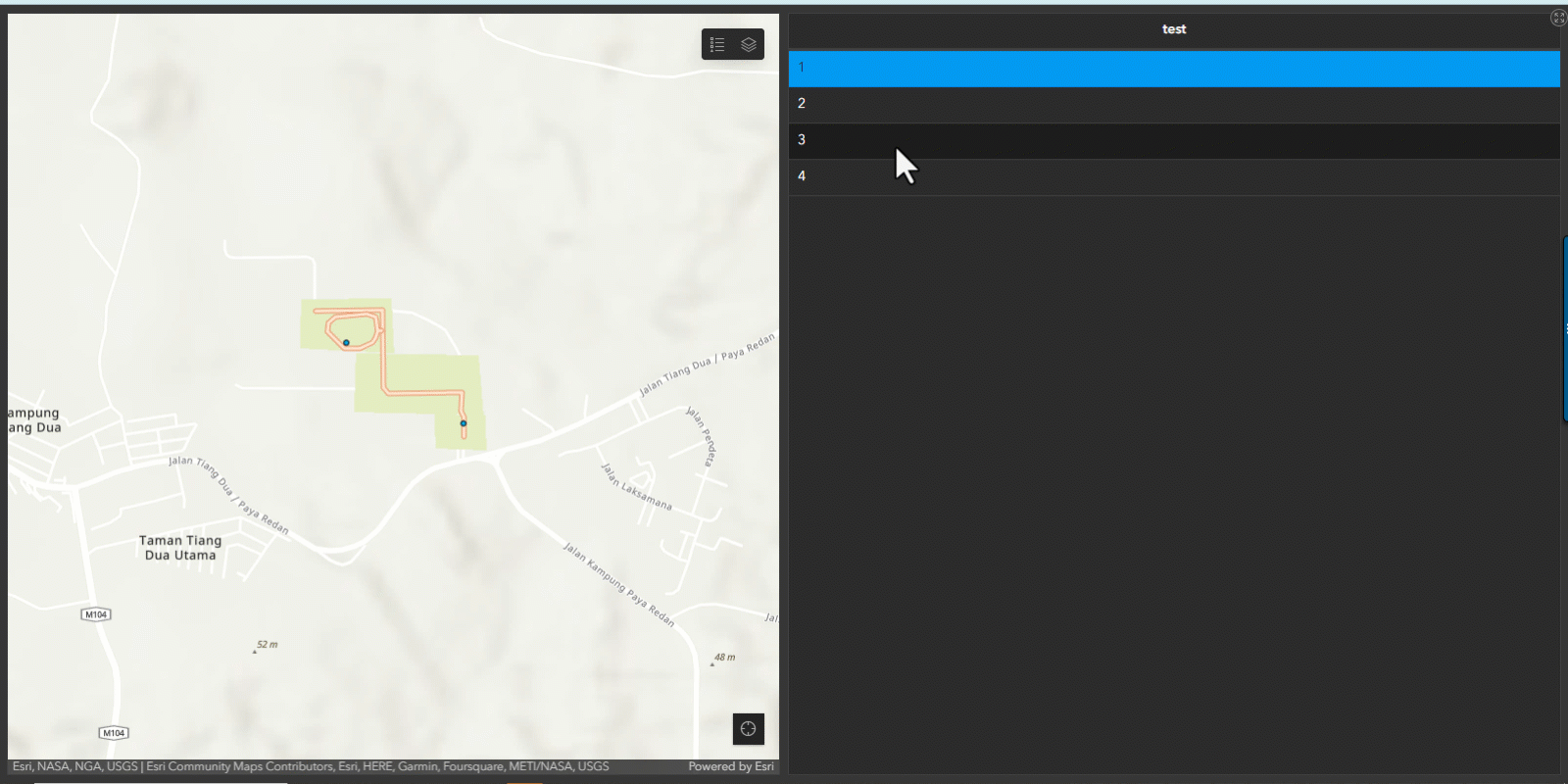HOW TO
Apply spatial filters on the table element in ArcGIS Dashboards
Summary
The spatial filter is used to find overlapping values between features and display or hide features according to the user's selection. The filter is helpful when analyzing a map that corresponds to a table within the same dashboard and this can be achieved in ArcGIS Dashboards with the grouped values table in the table element. This article provides the workflow to use spatial filtering on the table element in ArcGIS Dashboards.
Procedure
- In ArcGIS Dashboards, create a new dashboard. Refer to ArcGIS Dashboards: Create a dashboard for instructions.
- In the new dashboard, on the dashboard toolbar, click the Add element button.
- Click Map and configure the element.

- In the Select a map window, select the map. In this example, 'dashboard_test' is used.
- On the dashboard toolbar, click the Add element button and add a Table element.
- In the Select a layer window, select the desired layers from the map, or select any layer by clicking the Browse all layers button. This example uses the layer, 'Dots'.
- In the Table window, on the Data tab, under Table type, select Grouped values.
- Select a field for Category field. In this example, 'test' is used.

- In the Table window, click the Actions tab, and under When selection changes, expand Filter.
- Toggle the filter of the desired feature layer on. In this example, 'Field' is selected.
- Check the Render only when filtered check box.
- Select Spatial for Method.
- Click Done.

The map shows the features are spatially filtered based on the selected value.

Article ID: 000026989
Software:
- ArcGIS Online
- ArcGIS Dashboards
Get help from ArcGIS experts
Start chatting now

